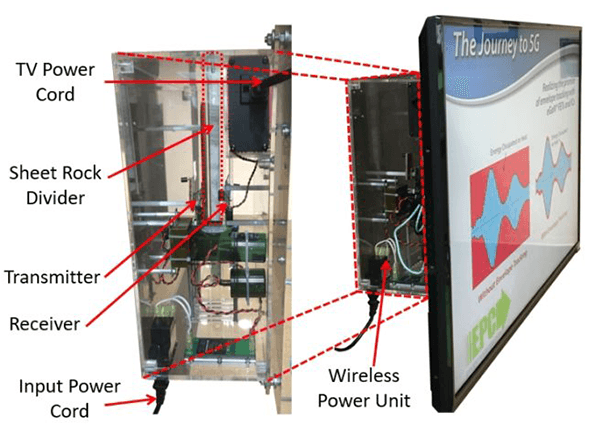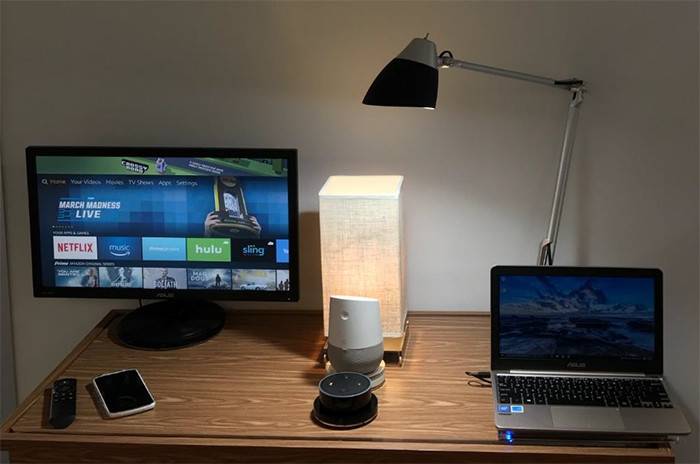POWER WITHOUT WIRES
POWER WITHOUT WIRES?
Could you power your TV set, your phones, and your house lights wirelessly? Alex Lidow, the CEO of EPC, says you will be able to do it- and soon.

EPC stands for Efficient Power Conversion. The company has been aggressively promoting gallium nitride electronics, believing it has important advantages over silicon, and and has licensed integrated circuits based on it.
Now EPC says it has found a way to provide home energy without extensive wiring. Wireless charging of devices has been limited. Apart from tablets, phones, toothbrushes, and batteries, almost all devices and appliances in our homes require wired connections. But this, Lidow says, is about to change.

Wireless charging is not new. There are two established methods for it. One is inductive charging; the other is magnetic resonance.
Inductive Charging
For inductive charging, you need precise alignment between transmitter and receiver. And it can charge only one device at a time. Consider, for example, an electric toothbrush. It can be charged only when in the cradle that houses its wired power source.
Magnetic Resonance
Magnetic resonance (MR) is more promising. It can power a receiving device placed anywhere on the transmission coil area. Positioning doesn’t have to be precise. And it can charge or energize several devices at one time. More devices with MR charging capability will soon be on the market. One is Dell’s new 2-in-1 Latitude computer, and at least 12 other MR charging products have been licensed by AirFuel, the MR standards body.
Magnetic resonance charging might seem to be ideal, but has its own limitations. It’s difficult to get it to work over a large area. The bigger the MR antenna, the further its magnetic fields extend. This induces interference with other electronics in the area. Increasing size of MR systems also increases risk of “off-resonance shifting”, which brings loss or distortion of signal, making the system costly and inefficient.
Is there a better way?
EPC claims to have overcome these limitations. Its new antenna can be built into much larger surfaces than AirFuel can, and can handle much higher power levels. Its charging stations can be built into table tops, wallpaper, and even floor coverings. They can be designed to extend their magnetic fields only one inch above the surface.
Interference and “off-resonance shifting” will be no more.
In the second image here, you see a 165 watt EPC charging table. No power cord is necessary for any of the items on it. In the demonstration here, the lamp, the computer monitor, and the Amazon Echo have no batteries. They are powered directly by a transmitter hidden below the table surface.
A charging wallpaper will provide power to wireless flatscreen TV sets and other wall-mounted devices.
EPC charging for hotels, taxis and aircraft would eliminate a huge headache for travelers: plugs incompatible with power outlets. Taiwan, China, and other Asian countries are considering using EPC charging for train stations.
Why is this important?
A huge portion of the cost of home construction is in electrical wiring. For a typical house, it costs $5000 to $25,000. Reduce the need for wiring-especially in walls- and you could see sharp reduction in home prices. Fewer exposed outlets also means reduced electrocution or fire hazard.
A properly designed MR power system should also be highly efficient, reducing energy cost.
(For your home services, shop with Bundle Deals. Compare all providers and plans. Then order any service with just one phone call.)
